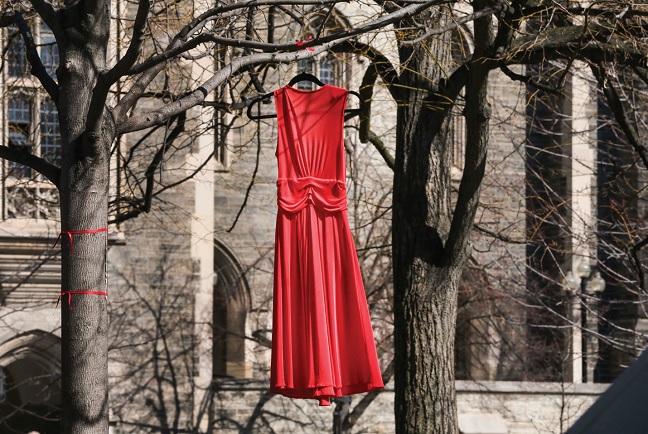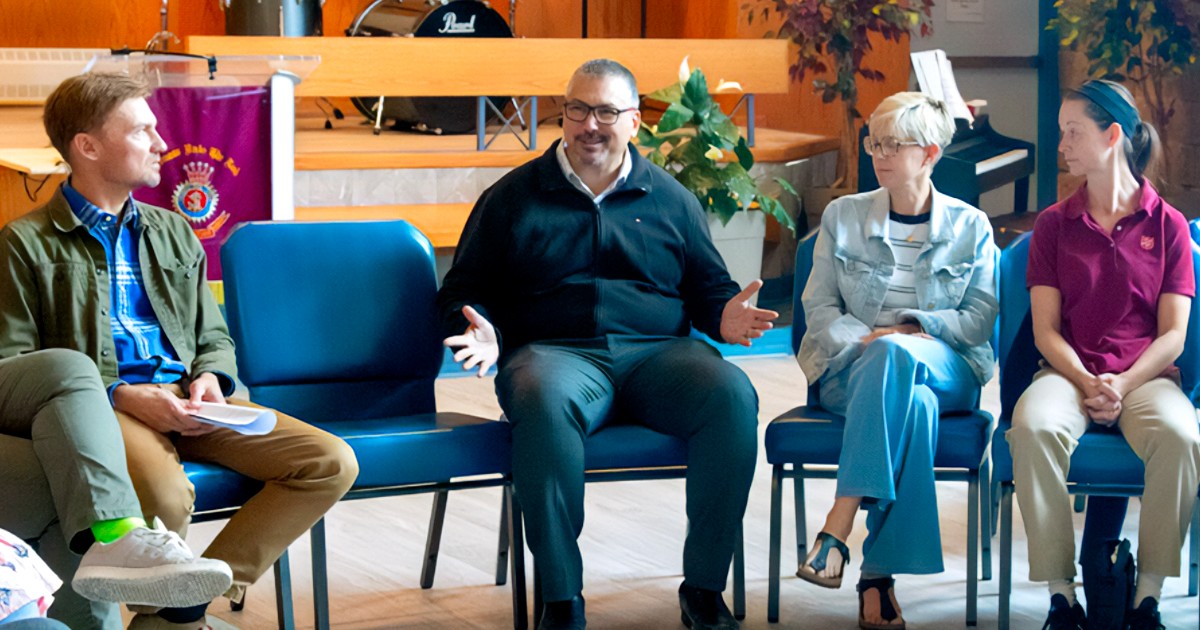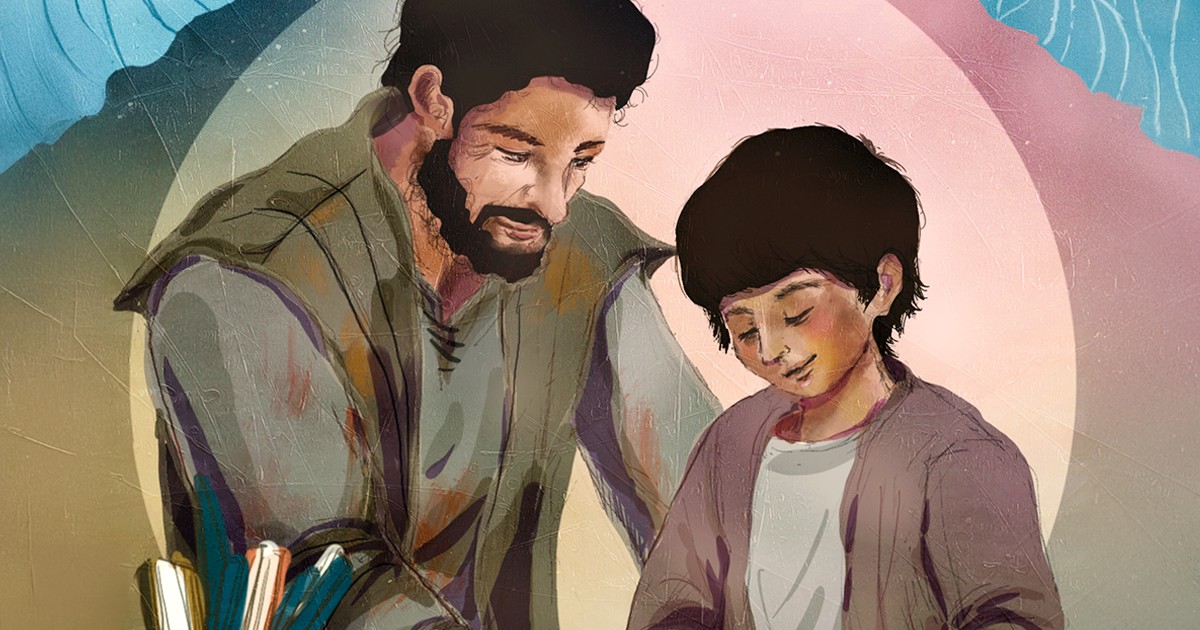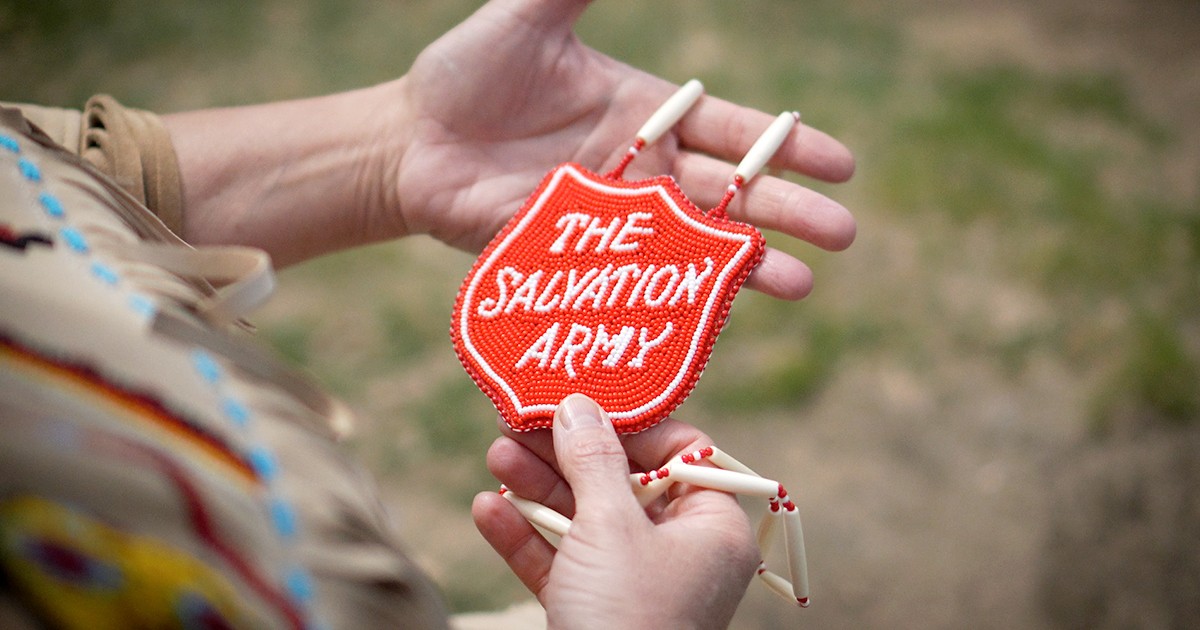The red dress floats in eerie silence, the empty garment bright against the barren background of dead, leafless trees. Adelaide, my four-year-old daughter, stares at the image on my phone, and asks questions. Questions I don't know how to answer. Mommy, why is that red dress there?
The answer is both simple and complex. The picture is on my phone because the REDress Project, on display at the Museum of Human Rights in Winnipeg, shocked me, and I wanted to remember it. That's the simple answer I gave my daughter.
The more complex—and disturbing—answer is that these empty dresses represent the 1,200 missing or murdered Indigenous women and girls in Canada. Exhibitions of the project, by Métis artist Jaime Black, have been held around the country. The red dress against a silent backdrop is a reminder of the silence of these women. Their humanity and their voices have been stolen.
The silence is also a reminder of the long silence that has accompanied these crimes. Having a voice is critical. It's not all that is required for human rights, but it is crucial. Silence is the ocean of the unsaid, the unspeakable, the repressed, the erased and the unheard. This silence has been decades long. Violence has claimed the lives of thousands of Indigenous women, and we don't talk about it.
Silence is what has allowed these crimes to go unpunished, in many cases; it has allowed people to suffer without recourse. For me, the presence of that red dress evokes the absence of these women to their families.
In February, I had the privilege of attending and participating in Hobiiyee, which marks the beginning of the Nisga'a First Nation's new year, in Gitwinksihlkw, B.C. Hobiiyee is a celebration of the harvest moon and the return of the oolichan fish. I was honoured to be given a beautiful red cape with a lizard on the back. Bright red, because red symbolizes life or light for the Nisga'a people. Women wear this colour because of their ability to give life.
Today, red dresses hang empty, the life and light of these women gone, their voices silenced forever.
But words still have power. We can still tell their stories. The establishment of a national public inquiry “into the causes of, and remedies for, the disproportionate victimization of Aboriginal women and girls” was a key call to action in the final report of the Truth and Reconciliation Commission.
The report was published in 2015, but as of yet, the inquiry has hardly begun. Less than 10 percent of the families of those who are known to be missing or murdered are on the documented list to be interviewed. The national inquiry into missing and murdered Indigenous women and girls needs to start taking testimony from victims' families. Now.
The stories need to be told, and heard. Of course, they won't bring these women back, but they can bring about inclusion and recognition, and begin the re-humanization of the victims. These stories can speak what has previously been unspoken. These stories can make what has been tolerated in Canada, intolerable. These stories will make the names and faces of the missing and murdered women unavoidable.
People have died because these stories have been swept under the rug and silenced. But something can change. Something has to change.
The task of calling things and people by their true names, of telling the truth to the best of our abilities, of knowing how we got here, of listening to those who have been silenced, of seeing how these stories fit together and break apart, of using any privilege we may have to undo privilege or expand its scope—this task belongs to each one of us.
So today, I tell Adelaide a story of how 1,200 women are no longer in these beautiful dresses. I show her pictures of the women. And in one small way, the silence is broken, and the story continues.
Lieutenant Kristen Jackson-Dockeray is the divisional youth secretary in the British Columbia Division.
The answer is both simple and complex. The picture is on my phone because the REDress Project, on display at the Museum of Human Rights in Winnipeg, shocked me, and I wanted to remember it. That's the simple answer I gave my daughter.
The more complex—and disturbing—answer is that these empty dresses represent the 1,200 missing or murdered Indigenous women and girls in Canada. Exhibitions of the project, by Métis artist Jaime Black, have been held around the country. The red dress against a silent backdrop is a reminder of the silence of these women. Their humanity and their voices have been stolen.
The silence is also a reminder of the long silence that has accompanied these crimes. Having a voice is critical. It's not all that is required for human rights, but it is crucial. Silence is the ocean of the unsaid, the unspeakable, the repressed, the erased and the unheard. This silence has been decades long. Violence has claimed the lives of thousands of Indigenous women, and we don't talk about it.
Silence is what has allowed these crimes to go unpunished, in many cases; it has allowed people to suffer without recourse. For me, the presence of that red dress evokes the absence of these women to their families.
In February, I had the privilege of attending and participating in Hobiiyee, which marks the beginning of the Nisga'a First Nation's new year, in Gitwinksihlkw, B.C. Hobiiyee is a celebration of the harvest moon and the return of the oolichan fish. I was honoured to be given a beautiful red cape with a lizard on the back. Bright red, because red symbolizes life or light for the Nisga'a people. Women wear this colour because of their ability to give life.
Today, red dresses hang empty, the life and light of these women gone, their voices silenced forever.
But words still have power. We can still tell their stories. The establishment of a national public inquiry “into the causes of, and remedies for, the disproportionate victimization of Aboriginal women and girls” was a key call to action in the final report of the Truth and Reconciliation Commission.
The report was published in 2015, but as of yet, the inquiry has hardly begun. Less than 10 percent of the families of those who are known to be missing or murdered are on the documented list to be interviewed. The national inquiry into missing and murdered Indigenous women and girls needs to start taking testimony from victims' families. Now.
The stories need to be told, and heard. Of course, they won't bring these women back, but they can bring about inclusion and recognition, and begin the re-humanization of the victims. These stories can speak what has previously been unspoken. These stories can make what has been tolerated in Canada, intolerable. These stories will make the names and faces of the missing and murdered women unavoidable.
People have died because these stories have been swept under the rug and silenced. But something can change. Something has to change.
The task of calling things and people by their true names, of telling the truth to the best of our abilities, of knowing how we got here, of listening to those who have been silenced, of seeing how these stories fit together and break apart, of using any privilege we may have to undo privilege or expand its scope—this task belongs to each one of us.
So today, I tell Adelaide a story of how 1,200 women are no longer in these beautiful dresses. I show her pictures of the women. And in one small way, the silence is broken, and the story continues.
Lieutenant Kristen Jackson-Dockeray is the divisional youth secretary in the British Columbia Division.










Leave a Comment